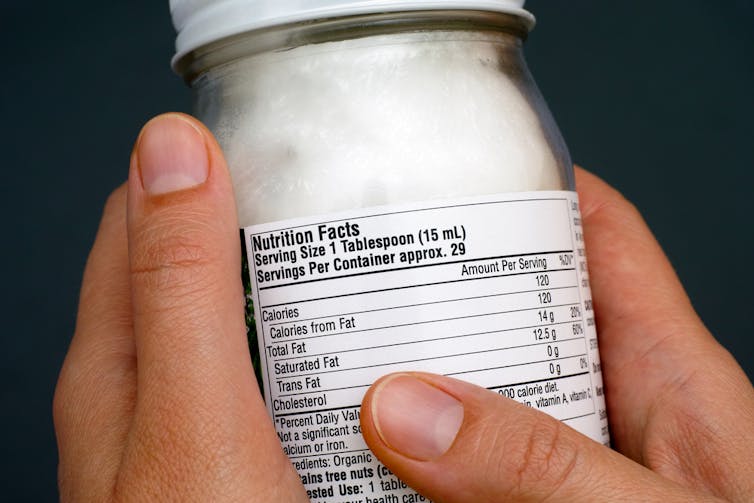Packaged products may contain more than the label states, including allergens
- Written by Katie Allen, Paediatric Allergist and Gastroenterologist, Murdoch Childrens Research Institute
 'May contain traces of nuts' labels aren't always present in foods that could be cross contaminated.from www.shutterstock.com
'May contain traces of nuts' labels aren't always present in foods that could be cross contaminated.from www.shutterstock.comOur new study has found packaged foods can contain allergens even when there is no listed ingredient or even warning on the label (such as “may contain traces of nuts”).
Paediatricians, allergy/immunology specialists, nurses and dietitians from the Australasian Society of Clinical Immunology and Allergy reported there were 14 cases of anaphylaxis (severe allergic reaction causing skin rash, vomiting, difficulty breathing or even death) to packaged foods over a nine-month period. Of those reactions, 50% were reported from foods that didn’t have a warning statement.
The reports of anaphylactic episodes to products both with and without a warning is of concern, as it suggests there is no reliable labelling system that can inform people with allergies if their food choice is a safe one.
Read more: Can I prevent food allergies in my kids?
Modern manufacturing processes
Modern manufacturing processes often share facilities and equipment for the processing of different foods, meaning there’s a risk of cross-contamination.
At the point of consumption, food products may have become cross-contaminated with residues of allergens due to shared farming practices, harvesting equipment, storage facilities, transportation vehicles, processing facilities and processing equipment.
This cross-contamination can leave an allergic patient vulnerable to any of the symptoms that can occur in a patient exposed to hidden allergens, ranging from hives to life-threatening anaphylaxis.
Consumers with food allergy are often advised to avoid products with precautionary statements, even though the exact risks are unknown.
 Allergens can contaminate other foods where manufacturing processes are shared, but it’s not always on the label.from www.shutterstock.com
Allergens can contaminate other foods where manufacturing processes are shared, but it’s not always on the label.from www.shutterstock.comRead more: What are allergies and why are we getting more of them?
Advice to parents
A more scientific approach to cross-contamination of foods has been developed in Australia, where manufacturers undergo a more intensive investigation into the possible presence of allergens in foods prior to their release to consumers.
Foods, and the environments they’re manufactured in, are tested for possible sources of allergen such as egg and peanut. If the level of cross-contamination is equal to or above a certain level that’s considered unsafe, a statement of “may be present” is used. If it’s below this level, no precautionary labelling is required.
Some international manufacturers have now implemented the use of this risk assessment tool. But a major limitation of this process is there’s nothing on the package to say these tests have been done.
Read more: Introduce eggs and peanuts early in infants’ diets to reduce the risk of allergies
This means allergic people have no way of telling which packaged foods are truly safe to eat.
Our results add significant concern to this dilemma. Those foods without a label may be safe because they have been risk assessed or they may be very unsafe because they have not been risk assessed at all.
Governments and regulatory bodies need to intervene to help resolve this dilemma. Food allergic consumers deserve to feel safe about eating packaged foods and they need to have clear guidelines. Manufacturers should clearly state not just which foods should be avoided, but which have been tested and which are safe to eat.
Katie Allen receives funding from the National Health and Medical Research Council. I am a Liberal Candidate for Prahran but believe this is unrelated to this article. I have recently completed the University of Melbourne School of Government Pathways to Politics Program for women.
Authors: Katie Allen, Paediatric Allergist and Gastroenterologist, Murdoch Childrens Research Institute



















